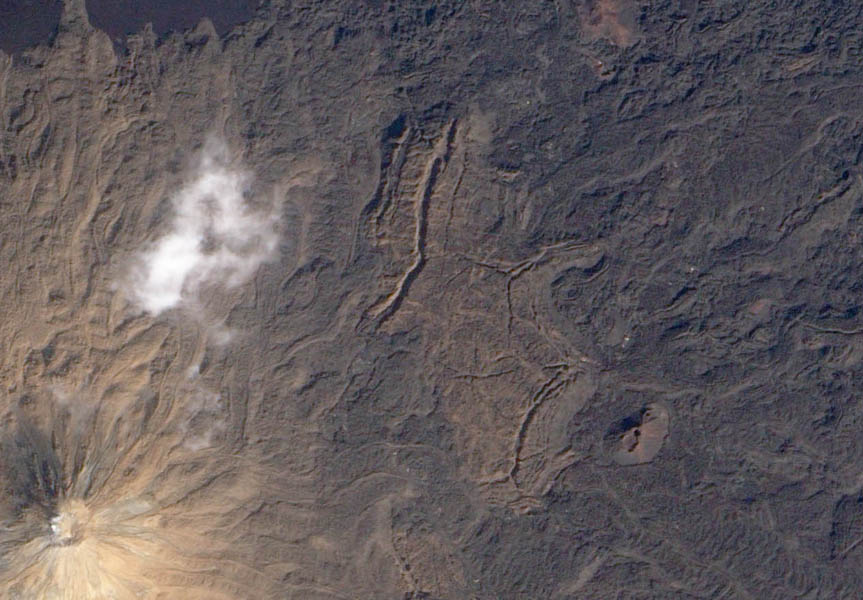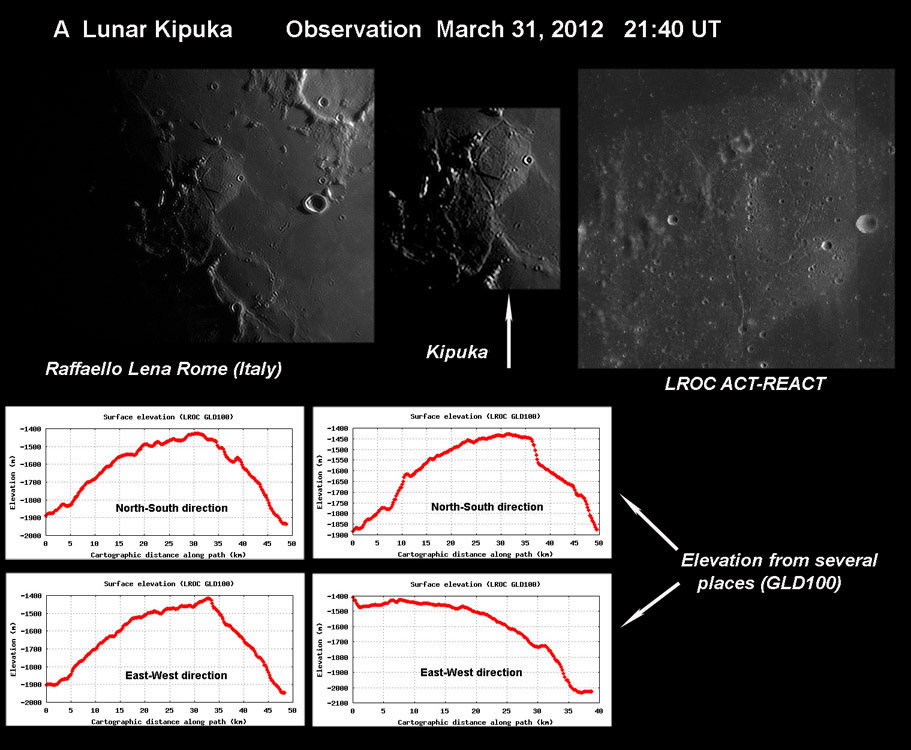April 11, 2012
Rebirth
image by Raf Lena, Rome, Italy
Kipuka is a lovely word that hardly anyone has heard of unless they've been to Hawaii. A kipuka is a high standing remnant of an earlier terrain now surrounded by lava flows. Raf has documented a classic example of a lunar kipuka, this slight rise (rising about 500 m over a radius of roughly 25 km) cut by the Opelt Rille at the boundary of maria Cognitum and Nubium. With lower resolution there isn't much difference between the rise and the surrounding, so it could be a large dome. But it is clear in Raf's image and the LRO excerpt at left that the rise is more fractured and more pitted with small craters. It isn't the same material - its older. The fact that the rise is cut by fractures suggests that its elevation may have resulted from it being domed upward when it was young. Its a kipuka now, but maybe it was a dome (or swell) before.
Chuck Wood
Related Links
Rükl plate 42
Later Addition
After posting this I came across an image released by NASA's Earth Observatory of young lava flows in Ethiopia. Part of it looked very similar to the kipuka described in today's LPOD.

See the EO posting for details.
COMMENTS?
Click on this icon File:PostIcon.jpg at the upper right to post a comment.




